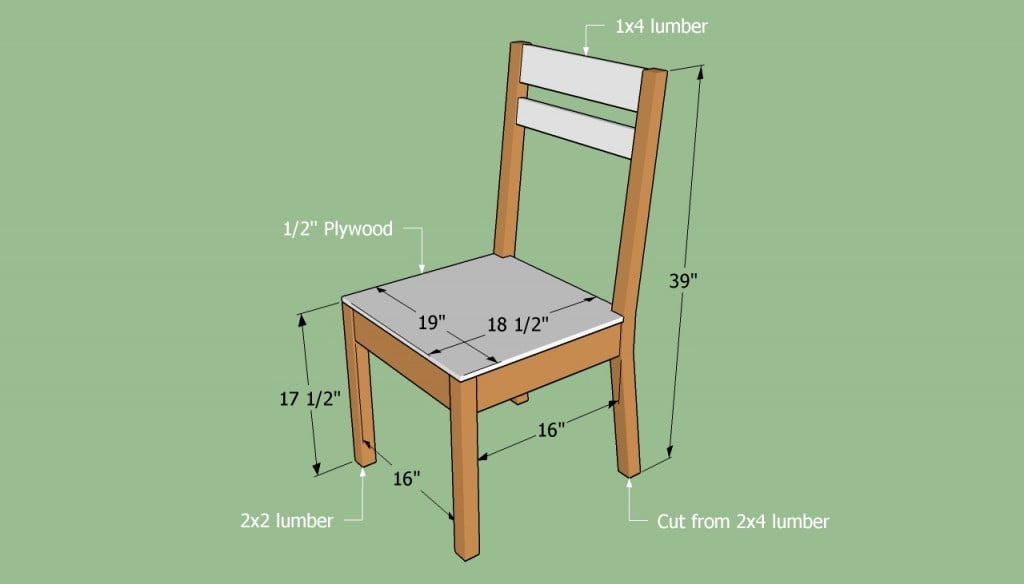Building the Chair Frame: Process Of Making A Wooden Chair

The chair frame is the foundation of the entire piece, providing structural support and defining the overall shape. It is typically constructed using a combination of wooden pieces, joined together using various techniques to create a strong and durable framework.
Chair Frame Construction Methods
The choice of joinery technique for building a chair frame depends on the desired aesthetic, strength, and complexity of the design. Here are some commonly used methods:
- Mortise and Tenon Joints: This traditional joinery technique involves creating a rectangular hole (mortise) in one piece of wood and a corresponding projection (tenon) on another. The tenon fits snugly into the mortise, creating a strong and durable joint. Mortise and tenon joints are often used for connecting chair legs to the seat rails and back rails.
- Dovetail Joints: Dovetail joints are a more intricate and visually appealing form of joinery, characterized by interlocking wedge-shaped pieces. The interlocking nature of the joint provides exceptional strength, making it suitable for areas that experience significant stress, such as the seat frame.
- Through Tenon Joints: Similar to mortise and tenon joints, through tenon joints involve a tenon that extends through the entire thickness of the piece being joined. This type of joint is often used for connecting chair legs to the seat rails.
- Butt Joints: Butt joints are the simplest form of joinery, involving two pieces of wood butted together and secured with glue and screws. While simple to create, butt joints are generally not as strong as other types of joints, and may require additional reinforcement.
- Spline Joints: Spline joints involve inserting a thin strip of wood (spline) into a groove cut into both pieces of wood being joined. This technique provides additional strength and stability to the joint, making it suitable for applications where a strong bond is required.
Types of Chair Frames, Process of making a wooden chair
Chair frames can be designed in a variety of ways, each with unique structural features and aesthetics.
- Classic Windsor Chair Frame: The Windsor chair frame is characterized by its simple, elegant design, often featuring a curved backrest and turned legs. The frame is typically constructed using mortise and tenon joints and splines for added strength and stability.
- Chippendale Chair Frame: Chippendale chairs are known for their ornate and intricate designs, often featuring elaborate carvings and decorative elements. The frame is typically constructed using mortise and tenon joints, dovetail joints, and other traditional joinery techniques.
- Ladderback Chair Frame: Ladderback chairs feature a simple, straight-backed frame, often constructed using mortise and tenon joints. The back slats are typically spaced evenly, resembling a ladder.
Advantages and Disadvantages of Joinery Techniques
- Mortise and Tenon Joints:
- Advantages: Strong, durable, and aesthetically pleasing.
- Disadvantages: Can be time-consuming to create, requiring precise cutting and fitting.
- Dovetail Joints:
- Advantages: Extremely strong, visually appealing, and prevent the pieces from pulling apart.
- Disadvantages: Can be challenging to create, requiring specialized tools and techniques.
- Through Tenon Joints:
- Advantages: Strong, durable, and relatively easy to create.
- Disadvantages: May require additional reinforcement for increased strength.
- Butt Joints:
- Advantages: Simple and easy to create.
- Disadvantages: Not as strong as other types of joints, may require additional reinforcement.
- Spline Joints:
- Advantages: Strong, durable, and provide additional stability.
- Disadvantages: Can be time-consuming to create, requiring precise cutting and fitting.
Process of making a wooden chair – The process of crafting a wooden chair involves a meticulous blend of skill and artistry, from selecting the right timber to shaping the curves and joints. This intricate process is exemplified in the ikea gregor chair white , which showcases the seamless integration of functionality and aesthetic appeal.
While the chair’s design might appear simple, the underlying craftsmanship is evident in its sturdy construction and elegant lines, a testament to the enduring legacy of wooden furniture making.
From selecting the right wood to meticulous carving and finishing, the process of crafting a wooden chair is a testament to skill and artistry. This meticulous approach is evident in the high quality of office table and chair sets in India , where craftsmanship meets modern design.
The final product, a sturdy and aesthetically pleasing chair, is a testament to the dedication of the artisans involved.
